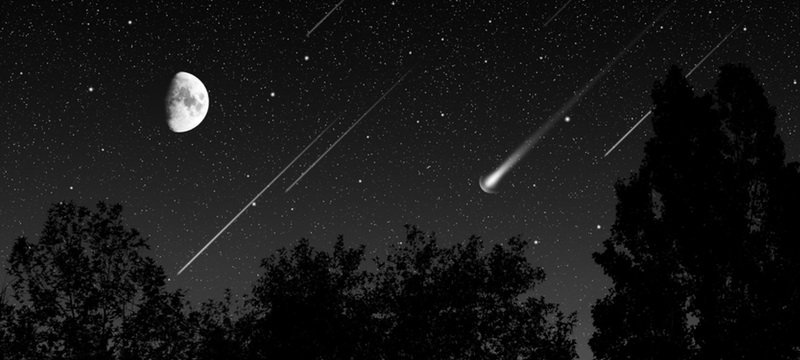Have you ever seen a shooting star at night and wished on it?
That practice of wishing from a shooting star from ancient times still exists today, but do wishes really come true?
Most people said they wished on a falling star and had their wish granted while other people saw them a few times and wished but not a single wish came true. Regardless of this mystery and unresolved question, to witness a shooting star from the sky is exceptionally beautiful.
Do you want to know more about shooting stars? Read these facts about meteors:
1.
Shooting stars are not stars. They are meteors.
2.
When a meteoroid hits the Earth’s atmosphere, aerodynamic heating produces a streak of light, both from the glowing object and the trail of glowing particles that it leaves in its wake. This phenomenon is called a meteor or meteorite.
3.
Meteors get into the Earth’s atmosphere at around 130,000 miles per hour.
4.
Dozens of small meteorites fall to the Earth everyday. “Falls” is the name for those seen coming down and those that are recovered on the ground are called “finds”.
5.
95% of small and big meteors are made up of the debris spewed out by comet’s tails.
6.
Meteorites are named after the places they were found, usually from its nearby city or region. If more than one meteorites are found in one location, they still may label it after the place but with some numbers followed to identify them.
7.
A series of meteors falling from the sky is called meteor showers. Meteors that fall in clusters happen when a comet travels through our Solar System. Meteor showers occur when the Earth passes through this trail of debris during its yearly orbit around the sun. Meteor showers usually happen at the same time each year.
8.
Meteor showers are named after the constellation from which the meteors appear to originate.
9.
If chunks of a meteor fall to the ground, they are called meteorites.
10.
Over 4 billion meteoroids fall to Earth everyday but they are too small to get noticed and cause any harm.
11.
According to the International Astronomical Union a meteoroid is “a solid object moving in interplanetary space, of a size considerably smaller than an asteroid and considerably larger than an atom”.
12.
Meteorites are categorized into three main classifications: stones, irons and stony-irons. Stony meteorites are made of silicate mineral, iron meteorites are mostly composed of metallic iron-nickel and stony-iron meteorites consist of nearly equal parts of meteoric iron and silicates.
13.
One of the world’s most famous meteorite crater is the “Meteor Crater” in Arizona, also known as the best preserved meteorite impact on Earth. “Meteor Crater” is the breath-taking result of a collision between a piece of an asteroid traveling at 26,000 miles per hour and planet Earth approximately 50,000 years ago.
14.
Under the National Heritage of Law, if you happen to find a meteorite in South Africa, you are obliged to surrender the rock to the nearest authority.
15.
The color of the light emitted by meteorites depends on their chemical composition: orange-yellow (sodium); yellow (iron); blue-green (magnesium); violet (calcium) and red (atmospheric nitrogen and oxygen).
16.
Meteorites contain the oldest known rocks in our solar system. They also contain “pre-solar grains”, which are minerals that formed around other stars, probably billions of years before our Solar System was born.
17.
Most people thought of meteors as omens. People in Switzerland think that meteors possess power of God. In Chile, one must pick up a stone when seeing a meteor and in Philippines, they tie a knot in a handkerchief before the meteor light blows out.
18.
Some meteor showers last only a few hours, others last for several days. The duration depends on how wide the dust trail is; some are narrow, others are wider.
19.
A meteor is named after a Greek term, ”meteoron” which means “phenomenon in the sky”.
20.
The International Space Station was coated with Kevlar, a material used for bulletproof vests, because it was expected to be hit by hundred thousands of meteoroids in its 20 year life span.
